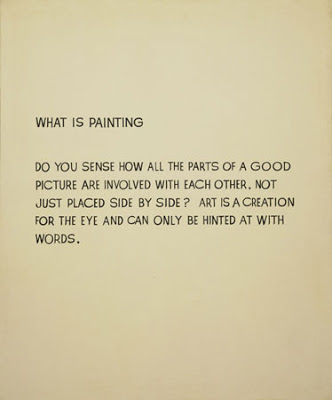2008
March 10, 2008
I was perusing a subway map on the wall of the station at 28th and Broadway, trying to figure out which trains went to Borough Hall in Brooklyn, when a voice behind me asked, “Can I help you?” Huh? However he turned out not to be a crook, but a gentle little man wearing a red vest with MTA emblazoned on it. He told me I could take the R the whole way, and I was so overcome by this gesture of municipal solicitude that I thanked him as profusely as if he’d carried me there himself. You also have to understand, kiddies, that in my day the MTA made a special practice of keeping you from knowing where you were going; train lines were named with a dizzying array of letters and numbers (there was not only the R, but the RR), station attendants were surly, no maps were posted past the turnstiles nor were there directions inside the subway cars. When my train arrived, I floated through the doors in a haze of goodwill until the skeptical New Yorker in me kicked in and I began to wonder if this was part of a conspiracy by the MTA to butter us up for a fare raise.
Comments (0)
March 5, 2008

“Punk is not dead” scratched into stainless steel (in the ladies’ room at the Tate Modern) seems the perfect image for 2008 in England, where punk was born and has achieved an everlasting adolescence. However in this latest manifestation punk has gone mainstream—-not in London as much as the outlying cities such as Canterbury, where you’ll see flocks of 10-year-old girls on the High Street sporting cellophaned hair, skinny black jeans and studded belts. It could be the healthiest of trends in that it doesn’t require a Hollywood-ready face or shape, is hardly about labels or the consumption of designer items—just the opposite—and allows for a wide range of DIY self-expression. Plus, given the emphasis on recycled clothing, it can even be considered green. The students at the University College for the Creative Arts in Rochester have taken it up in a big way:

However the beauteous Abbie, a photography student, has gone even more retro—at least on the days I saw her—the question “what’s Abbie wearing today?” being one of general interest in an art college where students and teachers of fashion, architecture, and visual art share (in my mind, to creative advantage) the same physical workspace.




But as with the hip hop kids with their droopy, oversize pants (a style I wouldn’t miss if it disappeared forever) I think it’s fascinating that kids are wearing the clothes their parents might have worn and playing the music their parents might have listened to. Aretha-meets-Britney incarnation Amy Winehouse, whose music is everywhere and her misadventures in every tabloid, appeals to both generations, thereby completing the circle.
March 2, 2008

The most important thing to know about England, bar none, is that while you can fly into the country with two carry-on items, you can leave with only one. A fact Continental did not tell me when I checked in for my return flight, which I only learned at the security gate. Unfortunately I had my computer with me, in a carry-on size suitcase, as well as a backpack containing my wallet, passport, lunch, iPod and other essentials. They said I could check my backpack and suitcase and just carry my computer on—-but that would mean I’d be checking my wallet, passport, etc. and also carrying my laptop on case-less, naked, which was clearly not a good idea. And put my good m0851 backpack through as luggage? No way! Fortunately downstairs there was a friendly kiosk willing to sell me a brand-new computer case I didn’t need for the equivalent of $70, into which I could cram my laptop and a few other items, and still have time to check my other stuff through.
The other thing to know is that to turn on any household appliance in England takes two separate actions. When I got up that first morning, in a house I’d never stayed in (one that my friends had just moved into, things still in boxes), in a neighborhood I didn’t know, Terry was already gone, having arisen early to go again to Heathrow (two hours drive) to retrieve his parents, who were arriving back after two months in South Africa. I had prepared for this eventuality by bringing food and tea, and patting myself on the back for such admirable forethought, looked forward to a shower and breakfast. It was not to happen. First of all, when I turned the knob on the stove, there was gas but no ignition. And no matches. And I couldn’t get the electric teakettle to work. And when I turned the shower thing on (I’m familiar with those little plastic boxes that provide infinite hot water on demand—-why don’t we have them?) no water came out.
Only after Terry returned many hours later, were these puzzles solved. To ignite the stove, he showed me, you have to turn on the burner, then push this teeny button way over on the left to ignite it. As for the teakettle, the problem was coordinating the off/on switch on the kettle (not clear) with the off/on switch on the outlet in the wall. That switch had two settings, one that you could push to reveal little letters that said “on” and one that made a red bar appear. To an American, or at least this one, “on” means, “hello, it’s on!” while red means it’s off. But noooo, “on” means “push here for on” and red means “it’s on.” Okay, then the shower. This one had even Terry, who had only taken baths in the house up to this point, stymied. In fact he’d been wondering what that pull string was for, hanging from the ceiling on the other side of the bathroom…
March 1, 2008


I have to admit I’ve always loved artful graffiti. It proves to me that the human desire to make art is innate, a force of nature like the weeds that spring up even in the cracked walls and sidewalks of the inner city. This desolate concrete area under the Hayward Gallery in London, facing the Thames, has become the province of skateboarders (the day I was there even little guys, under the age of ten, with their mums) and is an example of graffiti in the right place at the right time. It makes me think that town planners, instead of trying to shoo away a phenomenon that’s more persistent than they are, could embrace it and end up with something quite beautiful.
February 28, 2008

Walter Gropius from “The Theory and Organization of the Bauhaus” (1923)
…lately the artist has been misled by the fatal and arrogant fallacy, fostered by the state, that art is a profession which can be mastered by study. Schooling alone can never produce art!…Academic training, however, brought about the development of a great art-proletariat destined to social misery. For this art-proletariat, lulled into a dream of genius and enmeshed in artistic conceit, was being prepared for the ‘profession’ of architecture, painting, sculpture or graphic art, without being given the equipment of a real education….Lack of all vital connection with the life of the community led inevitably to barren esthetic speculation. The fundamental pedagogic mistake of the academy arose from its preoccupation with the idea of the individual genius and its discounting the value of commendable achievement on a less exalted level. Since the academy trained a myriad of minor talents in drawing and painting, of whom scarcely one in a thousand became a genuine architect or painter, the great mass of these individuals, fed on false hopes and trained as one-sided academicians, was condemned to a life of fruitless artistic activity. Unequipped to function successfully in the struggle for existence, they found themselves numbered among the social drones, useless, by virtue of their schooling, in the productive life of the nation.
It’s interesting to see how these words easily apply to our times as well. Eighty-five years later, we’ve gone through the industrial revolution, and the artistic revolution that was a response to it has institutionalized itself to the point that we’re back in the same old place, needing again to reassess how we approach art and aesthetics to meet a new set of requirements for a new age.
February 27, 2008

In the February issue of Interview, in a long conversation with Ingrid Sischy during which she asks if he’d give up those days when no one was interested if he could, John Baldessari says:
I’ve been more of a slow starter….During the time I was in San Diego I had no audience, just a couple of friends who did art, and yet I made some of the most important work of my career then. If I’d been in New York, I might have gotten too much attention. I think there is value in being under the radar. And now I don’t care about the spotlight because I am who I am so it doesn’t really matter. So yeah, I think that long maturation process has been worthwhile….I’m obsessed with art, and I’ve always told my students that while you have to be talented, you also have to be obsessed with art, to the point that you’re going to do it no matter what. I’m very thankful I became an artist during a time when you didn’t make money [doing it]….
February 26, 2008
February 25, 2008

The installation at the Tate Modern (below), Doris Salcedo’s Shibboleth provides an excellent example of rhetoric standing in for, or justifying, the art. This is excerpted from the publicity material, which I suggest reading in toto just to get the full effect:
Salcedo is addressing a long legacy of racism and colonialism that underlies the modern world…” The history of racism,” Salcedo writes, “runs parallel to the history of modernity, and is its untold dark side”…. Our own time, Salcedo is keen to remind us, remains defined by the existence of a huge socially excluded underclass, in Western as well as post-colonial societies…”
Hullo, it’s a crack. A crack. A break in concrete. The artist’s intention does not change the experience, which happens to be one that leads to strange parental behavior. But if you insist on metaphor, it could represent any disparity—including the one between those who are willing to shell out $50 for a Duchamp T-shirt and those who aren’t.